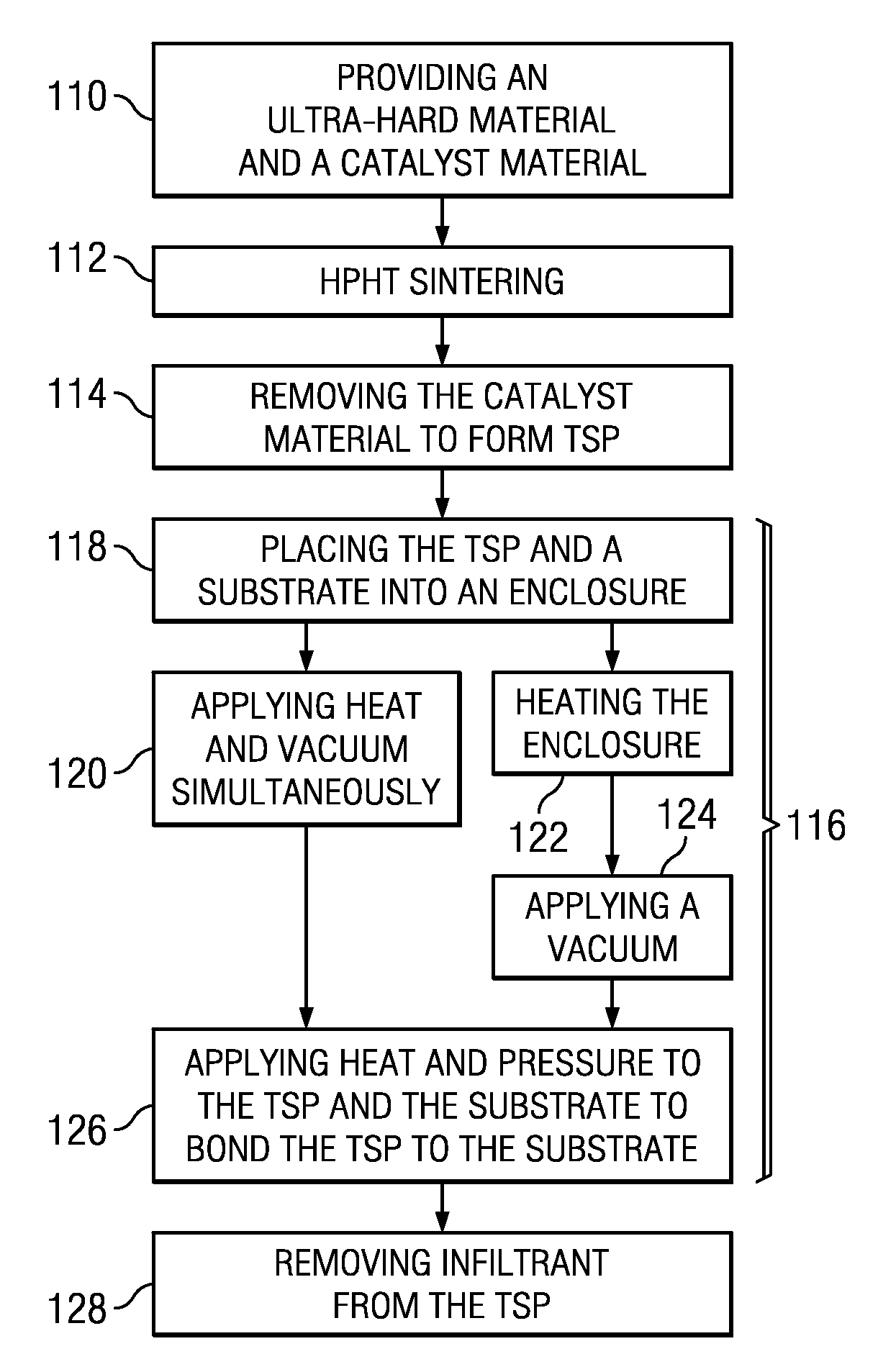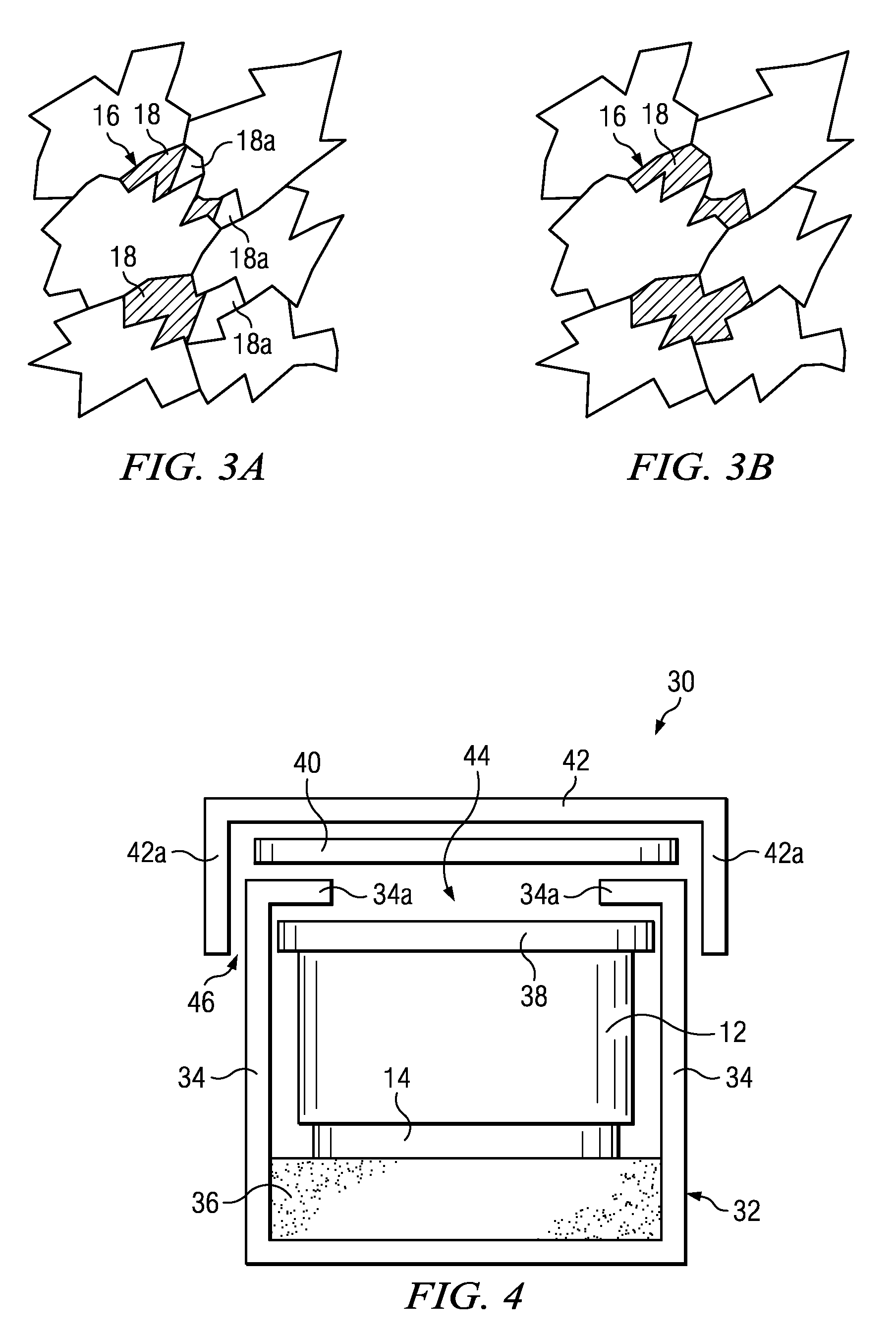Method of forming a thermally stable diamond cutting element
a cutting element and thermally stable technology, applied in the field of thermally stable diamond cutting element formation, can solve the problems of structural disintegration in the pcd layer, limiting the service life of the cutting element, and introducing thermal stresses to the pcd material, so as to facilitate the leaching of the cutting surface, improve the thermal characteristics, and reduce the thermal stress of the material
- Summary
- Abstract
- Description
- Claims
- Application Information
AI Technical Summary
Benefits of technology
Problems solved by technology
Method used
Image
Examples
Embodiment Construction
[0023]The present invention involves the use of a vacuum-sealed enclosure during a bonding process to improve the properties of an infiltrated TSP cutting element. In one exemplary embodiment, diamond crystals and a catalyst material are high-pressure high-temperature sintered to form a polycrystalline diamond material (PCD). If a substrate is present during this sintering step, catalyst material from the substrate infiltrates the diamond crystal layer. After sintering, the substrate is removed. The catalyst is removed from the PCD, forming a thermally stable product (TSP). In this leaching or removal process, substantially all (about 95% or more, for example 98% or more, or even 99% or more) of the catalyst is removed from at least a portion of the PCD, forming TSP. Alternatively, leaching can be done prior to removing the substrate from the PCD. The TSP is then bonded to a substrate via an HPHT bonding process. The TSP material and the substrate are placed into an enclosure such a...
PUM
| Property | Measurement | Unit |
|---|---|---|
| temperature | aaaaa | aaaaa |
| temperature | aaaaa | aaaaa |
| pressure | aaaaa | aaaaa |
Abstract
Description
Claims
Application Information
 Login to View More
Login to View More - R&D
- Intellectual Property
- Life Sciences
- Materials
- Tech Scout
- Unparalleled Data Quality
- Higher Quality Content
- 60% Fewer Hallucinations
Browse by: Latest US Patents, China's latest patents, Technical Efficacy Thesaurus, Application Domain, Technology Topic, Popular Technical Reports.
© 2025 PatSnap. All rights reserved.Legal|Privacy policy|Modern Slavery Act Transparency Statement|Sitemap|About US| Contact US: help@patsnap.com



